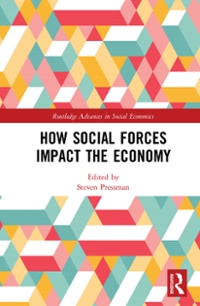1. A farmer has to decide how much of an area of land she should bring into production for corn in the coming growing season. Market demand for com can be written as Q = 450 - 2P. Quantity is measured as units, and price is measured as $/unit. The farmer's private marginal cost of bringing land into com production can be represented by the following function: MC, = Q. Any land that is not brought into corn production helps to prevent erosion and nutrient runoff into the local river. Therefore, there are additional costs of bringing land into production that are not included in the farmer's decision making (i.e. are not captured by the farmer's private marginal cost function). The marginal social cost of corn production on the land (i.e. the sum of the farmer's private marginal cost and the negative externality of erosion) can be represented by the following function: MC; = 20. (46 marks) a) Graph the inverse demand function, and the social and private marginal cost functions. (22 marks) b) How much corn will the farmer produce to pursue her own maximum profit, and at what price? [Hint when equating MC to Demand you need to re-arrange demand into its inverse form.] (10 marks) C) How much corn should be produced in an efficient allocation, and at what price? (8 marks) d) Suppose that the government asks you, an economist, to come up with a tax that would achieve an efficient and socially optimal quantity of corn production. They specifically request that the tax should be a constant, per-unit tax (i.e. pigovian tax in-class example). They plan on applying the tax to the farmer. What level of tax rate, t, would you recommend? Please show the tax rate on the figure in part a). (6 marks) 2. Assume that the grazing pasture described in the in-class portion (Question 3) can now be used by any farmer in the village. Assume that there are a large number of farmers, each deciding (independently of the other farmers) on how many cows to apply to the grazing area. No farmer can be excluded from grazing. (15 marks) ) What will each farmer's objective be? (2 marks) b) Using the terminology of your text and/or our in-class discussion, how would you characterize this resource? Does this situation characterize a property rights regime associated with efficiency? (6 marks) c) Using the above information, and information provided in question 3 of the in-class portion, how many cows (approximately) will you expect to be grazing on the pasture in this situation? [Hint: Set Average Revenue = Average Cost.] (4 marks) d) Is the number of cows calculated in part (C) an efficient grazing level? Explain







